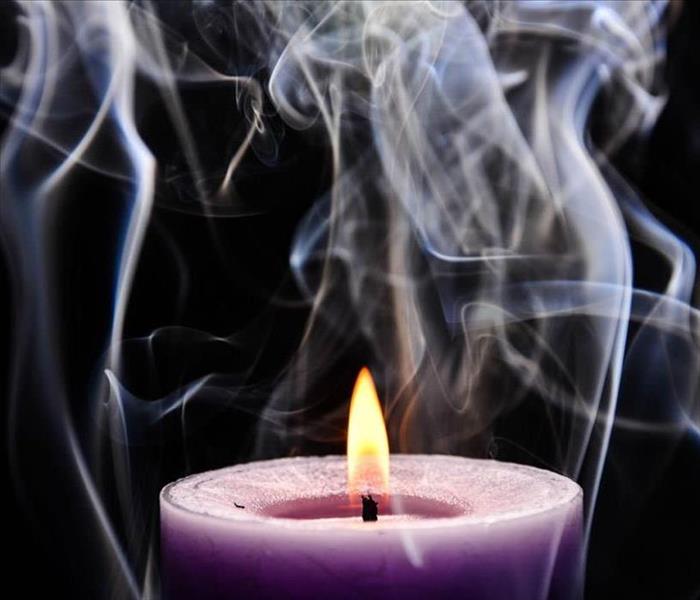Black soot on your walls can be caused by burning candles in your home.
12/10/2019 (Permalink)
Insurance and commercial property management companies have noted an increase in claims due to black spot stains on ceilings, walls, furniture, content and HVAC filters from previously unidentified sources. The problem is referred to as “black soot deposition” (BSD) and, as research indicates, it is frequently caused by a common household decorative item.
There is no evidence of a sudden or accidental source for BSD, such as malfunctioning furnaces, gas water heaters, cigarette smoke or cooking by-products. Until recently, there was little compelling evidence to assign proper blame for the source of BSD. Tests have confirmed, however, it is very possible decorative scented candles are a primary culprit.
Low-quality candles often to blame
Research indicates increased BSD is often the result of candle manufacturers adding additional fragrance oils to their products, along with improper wick trimming by customers. Many fragrance oils are not suitable for combustion and do not burn cleanly. It also appears that many amateur candle-makers have entered the expanding market to capitalize on the current popularity of candles without proper training or experience. The outcome is an abundance of low-quality candles burning in many homes and a corresponding increase in the frequency of indoor soot deposits.
Potential dangers to structure and health
The number of aromatic candle manufacturers, professional and amateur, grows each year. A number of these introduce candles to their product line without the knowledge necessary to produce a safe and clean-burning product. Chemical testing provides conclusive evidence that emissions from some burning candles contain more than twenty volatile organic compounds, lead and a significant amount of carbon.
Burning scented candles inside homes, apartments and commercial buildings can present serious health hazards to those living and working there. It can also mean damage to ventilation systems, furnishing and content. Evidence suggests breathing even one micron of particulate soot can be hazardous. The Environmental Protection Agency (EPA) and American Lung Association (ALA) have determined breathing particulate matter 2.5 microns or smaller is detrimental to human health. These particles are dangerous because they are inhaled deeply into the lungs, causing irritation and respiratory problems. Those at extra risk include people with heart or lung disease, children and the elderly.






 24/7 Emergency Service
24/7 Emergency Service
